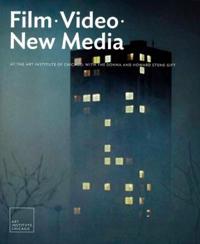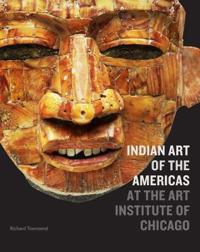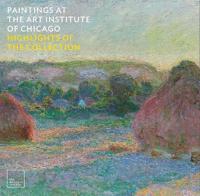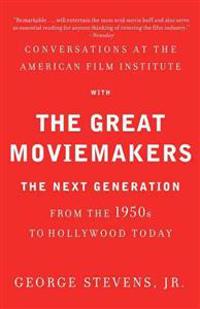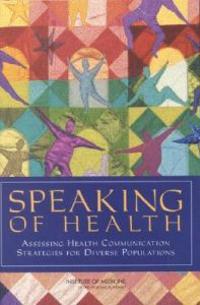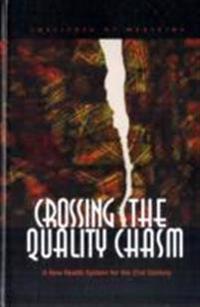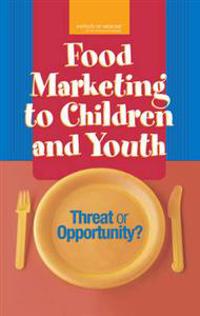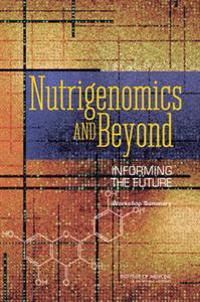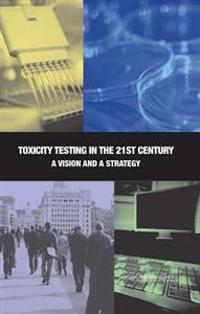Biomass, Energy and Environment: A Developing Country Perspective from India (Inbunden)
avBangalore) N.H. Ravindranath (Indian Institute Of Science, David O. Hall
ISBN: 9780198564362 - UTGIVEN: 1995-09-07SIPRI Yearbook 2014 (Inbunden)
avStockholm International Peace Research Institute
ISBN: 9780198712596 - UTGIVEN: 2014-10The 45th edition of the SIPRI Yearbook analyses developments in 2013 in Security and conflicts Military spending and armaments Non-proliferation, arms control and disarmament The SIPRI Yearbook contains extensive annexes on the implementation of arms control and disarmament agreements and a chronolo[...]
SIPRI Yearbook 2001: Armaments, Disarmament and International Security: 2001 (Inbunden)
avStockholm International Peace Research Institute
ISBN: 9780199247721 - UTGIVEN: 2001-08-02SIPRI Yearbook 2012 (Inbunden)
avStockholm International Peace Research Institute (COR)
ISBN: 9780199650583 - UTGIVEN: 201209The 43rd edition of the SIPRI Yearbook analyses developments in 2011 in Security and conflicts Military spending and armaments Non-proliferation, arms control and disarmament The SIPRI Yearbook contains extensive annexes on the implementation of arms control and disarmament agreements and a chronolo[...]
SIPRI Yearbook (Inbunden)
avStockholm International Peace Research Institute
ISBN: 9780199678433 - UTGIVEN: 201307The 44th edition of the SIPRI Yearbook analyses developments in 2012 in Security and conflicts Military spending and armaments Non-proliferation, arms control and disarmament The SIPRI Yearbook contains extensive annexes on the implementation of arms control and disarmament agreements and a chronolo[...]
SIPRI Yearbook 2011: Armaments, Disarmament and International Security (Inbunden)
avStockholm International Peace Research Institute
ISBN: 9780199695522 - UTGIVEN: 2011-08-25European Tapestries in the Art Institute of Chicago
ISBN: 9780300119602 - UTGIVEN: 2008-11This lavishly illustrated book presents a rich variety of European tapestries from the Art Institute of Chicago. These exquisite tapestries include medieval, Renaissance, and Baroque examples, manufactured at almost all the major centers of production in many of the foremost workshops. Among the wor[...]
Film, Video, and New Media at the Art Institute of Chicago (Pocket)
avLisa Dorin, James (FRW) Rondeau, Lisa Dorin
ISBN: 9780300146905 - UTGIVEN: 2009-05During the past four decades, the accessibility of videotape, along with that of 8- and 16-millimeter film, has revolutionized artistic production, and moving-image technologies ranging from the filmic to the digital have attained mainstream status. This exciting publication, the first devoted exclu[...]
Master Paintings in the Art Institute of Chicago (Inbunden)
ISBN: 9780300191882 - UTGIVEN: 2013-09A key destination for any art lover, the Art Institute of Chicago houses an extraordinary collection of master paintings. Within the covers of this beautiful book, updated to include some recent acquisitions and a new preface by director Douglas Druick, the reader finds an amazing selection of Europ[...]
Indian Art of the Americas at the Art Institute of Chicago
ISBN: 9780300214833 - UTGIVEN: 2016-08A stunning survey of the indigenous art, architecture, and spiritual beliefs of the Americas, from the Precolumbian era to the 20th century This landmark publication catalogues the Art Institute of Chicago's outstanding collection of Indian art of the Americas, one of the foremost of its kind in the[...]
American Silver in the Art Institute of Chicago
ISBN: 9780300222364 - UTGIVEN: 2017-01The history of American silver offers invaluable insights into the economic and cultural history of the nation itself. Published here for the first time, the Art Institute of Chicago's superb collection embodies innovation and beauty from the colonial era to the present. In the 17th century, silvers[...]
Paintings at the Art Institute of Chicago
ISBN: 9780300225723 - UTGIVEN: 2017-05An updated selection of key paintings at the Art Institute of Chicago, featuring works from around the globe and dating from ancient Egypt to the present day The Art Institute of Chicago, one of the most beloved and important museums in the world, houses an extraordinary collection of objects from d[...]
Conversations at the American Film Institute with the Great Moviemakers: The Next Generation (Häftad)
avGeorge Stevens Jr
ISBN: 9780307474988 - UTGIVEN: 2014-01A rich companion volume to George Stevens, Jr.'s much admired book of American Film Institute seminars with the pioneering moviemakers of Hollywood's Golden Age, this time with a focus on filmmakers of the 1950s to present day.
"The Next Generation" brings together conversations with moviemakers[...]Rodents (Pocket)
avCommittee on Rodents Institute of Laboratory Animal Resources Commissi
ISBN: 9780309049368 - UTGIVEN: 1996-07In the 15 years since the last Institute of Laboratory Animal Resources report on the general management of rodents was published, important advances in biomedical research and increased public awareness have created a new environment for animal research. Modern technology-such as insertion of funct[...]
From Neurons to Neighborhoods (Inbunden)
avNational Research Council and Institute of Medicine, Committee on Integrating the Science of Early Childhood Development
ISBN: 9780309069885 - UTGIVEN: 200011How we raise young children is one of today's most highly personalized and sharply politicized issues, in part because each of us can claim some level of "expertise." The debate has intensified as discoveries about our development-in the womb and in the first months and years-have reached the popula[...]
Speaking of Health (Inbunden)
avCommittee on Communication for Behavior Change in the 21st Century: Improvi, Board on Neuroscience and Behavioral Health, Institute of Medicine
ISBN: 9780309072717 - UTGIVEN: 2002-11We are what we eat. That old expression seems particularly poignant every time we have our blood drawn for a routine physical to check our cholesterol levels. And, it's not just what we eat that affects our health. Whole ranges of behaviors ultimately make a difference in how we feel and how we main[...]
Crossing the Quality Chasm (Inbunden)
avCommittee on Quality of Health Care in America, Institute of Medicine
ISBN: 9780309072809 - UTGIVEN: 200107This is the second in a series of publications from the Institute of Medicine's Quality of Health Care in America project. Today's health care providers have more research findings and more technology available to them than ever before. Yet recent reports have raised serious doubts about the quality[...]
Food Marketing to Children And Youth (Inbunden)
avInstitute of Medicine (U. S.), J. Michael McGinnis, Jennifer Appleton Gootman
ISBN: 9780309097130 - UTGIVEN: 2006-04Creating an environment in which children in the United States grow up healthy should be a high priority for the nation. Yet the prevailing pattern of food and beverage marketing to children in America represents, at best, a missed opportunity, and at worst, a direct threat to the health prospects o[...]
Nutrigenomics and Beyond (Häftad)
avFood and Nutrition Board, Institute of Medicine, National Academy of Sciences
ISBN: 9780309104890 - UTGIVEN: 2007-06The integration of biology, genomics, and health has opened the possibility of applying genomics technology to nutrition. In 2001, scientists associated with the Human Genome Project announced the successful mapping of the reference sequence of the human genome. Since then, a body of information has[...]
Toxicity Testing in the 21st Century (Häftad)
avCommittee on Toxicity Testing and Assessment of Environmental Agents, Board on Environmental Studies and Toxicology, Institute for Laboratory Animal Research
ISBN: 9780309151733 - UTGIVEN: 2007-10Advances in molecular biology and toxicology are paving the way for major improvements in the evaluation of the hazards posed by the large number of chemicals found at low levels in the environment. The National Research Council was asked by the U.S. Environmental Protection Agency to review the sta[...]
Guide for the Care and Use of Laboratory Animals (Häftad)
avCommittee for the Update of the Guide for the Care and Use of Laboratory An, Institute for Laboratory Animal Research, Division on Earth and Life Studies
ISBN: 9780309154000 - UTGIVEN: 201012A respected resource for decades, the Guide for the Care and Use of Laboratory Animals has been updated by a committee of experts, taking into consideration input from the scientific and laboratory animal communities and the public at large. The Guide incorporates new scientific information on commo[...]
Keeping Patients Safe (Pocket)
avInstitute of Medicine (U. S.) Committee (COR)
ISBN: 9780309187367 - UTGIVEN: 2004-03Building on the revolutionary Institute of Medicine reports To Err is Human and Crossing the Quality Chasm, Keeping Patients Safe lays out guidelines for improving patient safety by changing nurses' working conditions and demands. Licensed nurses and unlicensed nursing assistants are critical partic[...]
Nutrition and Traumatic Brain Injury (Häftad)
avTrauma Committee on Nutrition, Food and Nutrition Board, Institute of Medicine
ISBN: 9780309210089 - UTGIVEN: 2011-06Traumatic brain injury (TBI) accounts for up to one-third of combat-related injuries in Iraq and Afghanistan, according to some estimates. TBI is also a major problem among civilians, especially those who engage in certain sports. At the request of the Department of Defense, the IOM examined the pot[...]










